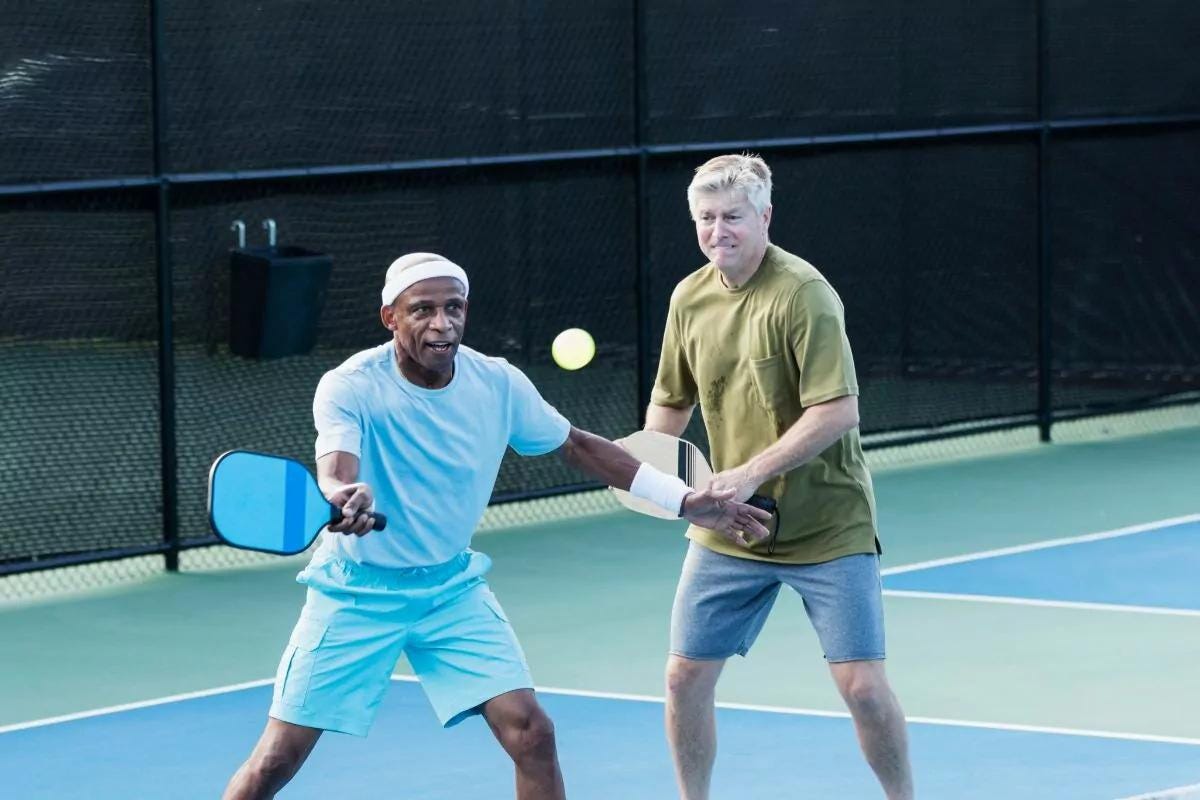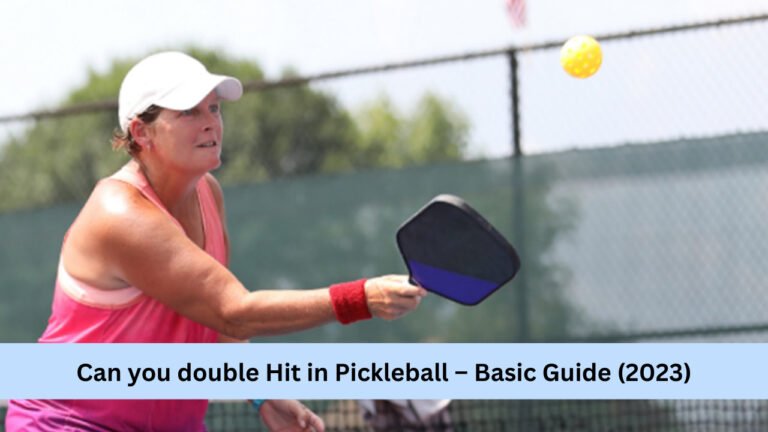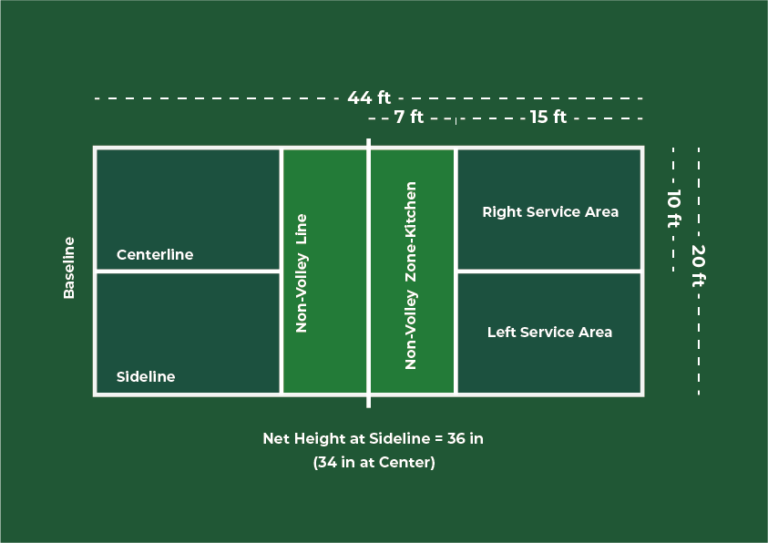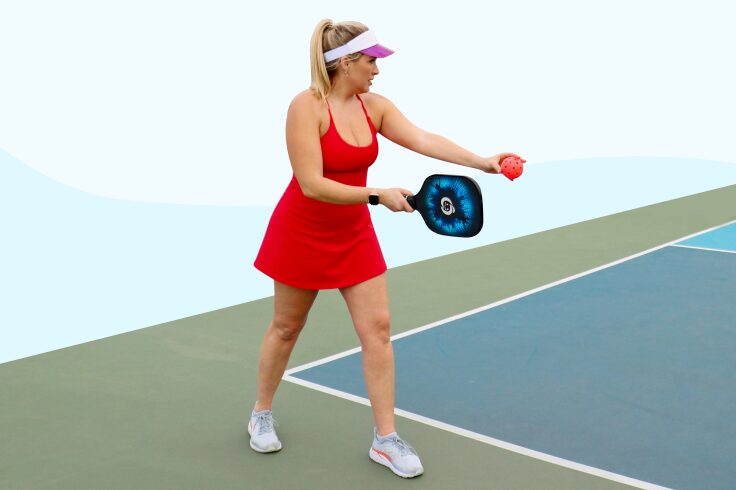What is Bert in Pickleball
What is Bert in Pickleball? An Erne is an assertive shot that is played over the non-volley zone from the air which is known as the kitchen. This shot is played by a player in the air. He jumps outside the court, hits the ball, and hands it outside the kitchen. This is a hard short and only experts can play this hit. Erne in pickleball was named after a professional player Erney Perry due to his bold move in the Erne shot. Erny Perry was not the introducer of this shot but he brought this shot to the world.
To play the shot you must know the good chance with an accurate time with precision. Now let’s start the answer to the question: what is Bert in Pickleball? Bert is like Erne, but here’s the cool part: it happens on your teammate’s side of the pickleball court, adding a bit of extra strategy to the game. This amazing shot is also called a poached shot it needs perfect timing, skill, and teamwork between partners.

In this shot, the players come into the partner’s court. Players give an aggressive shot from their partner’s side directly down the direction towards the opponent’s feet. Make sure you talk to your partner and let them know what you are planning because if you don’t do it right you both will end up in a bad position. So it should be pre-planned after discussing it with the teammate.
What is Bert in Pickleball
Bert vS Erne

In pickleball, you can’t play Erne without Bert. It follows the Sesame Street rule. Erne and Bert are termed for two advanced shots, mainly used in intense matches because they require a high skill level. The main distinct feature is the standing position of the players on the court. During performing Erne, a player stands outside the court near the kitchen area, leaning and jumping into the volley. But in a Bert, a player jumps from one side to another to volley the ball.
As for now you already know “What is Bert in Pickleball” Now it’s time to tell you the reasons for playing “Bert” in Pickleball. Similar to the Erne the Bert shot exerts a large pressure on your competitor, stressing them to produce precise shots. This high pressure causes unforced errors if your opponents change their attention to your movements. The same thing applies to Bert.
When a team is stacking, the player on the left side jumps over to the right-hand side of the pickleball court when the forehand is positioned in the middle.
My pro tips to keep in mind before hitting the Bert
Here I am describing the answer to the question of what is Bert in pickleball and how to play it precisely. Tips are given below in detail:
Tip 1: Watch out for Your teammate
Make sure not to bump into your partner when doing a Bert. The decision to use a Bert happens suddenly, and if your partner isn’t ready, they might not even know you’re crossing the court. Talk before the game about the possibility of using a Bert so you’re both prepared. If you don’t communicate well, you might end up colliding, and that’s not good.
Tip 2: Mind Your Toes
Don’t step on the kitchen line—simple, right? Even a tiny touch on that non-volley zone line is a mistake and ruins your plan. Jump from inside the kitchen line to stay safe. Keep in mind you can jump a bit more if needed, but once your foot touches that line, it’s an error, and the rally is done.
Tip 3: Look forward
Be ready for shots that make a Bert possible. Look for a soft drink near your partner’s side of the net that’s high enough to attack. The better you understand your opponents’ shots, the more likely you’ll pull off a successful Bert and maybe win the point quickly.
Tip 4: Keep It a Secret
Don’t give away your Bert plans too quickly. If you’re too keen or make inaccurate moves, your opponent might catch on. Be cold and don’t show your senses too soon. Don’t change toward your partner’s side too fast, and don’t gaze too much. Keep it a secret, and your opponent won’t see it coming.
cONCLUSION
In conclusion for What is Bert in Pickleball, understanding advanced shots like Erne and Bert in pickleball adds a layer of excitement and method to the game. Both shots, named after skilled players, require precision, timing, and teamwork. Bert, a poached shot on the teammate’s side, adds pressure to opponents, leading to unforced errors. Coordination between partners is important, and players should express and pre-plan Bert’s maneuvers.
FAQs
What is Bert in Pickleball?
Bert is a strategic shot in Pickleball, similar to Erne, executed on your teammate’s side of the court. Also known as a poached shot, it requires precise timing, skill, and teamwork between partners.
How does Bert differ from Erne in Pickleball?
Erne and Bert are advanced shots in Pickleball. While Erne is played from outside the court over the non-volley zone, Bert involves a player jumping from one side to another on their teammate’s court, adding an extra layer of strategy.
What is the relationship between Bert and Erne in Pickleball?
Erne and Bert are interlinked in Pickleball. Both are advanced shots used in intense matches, requiring a high skill level. The Sesame Street rule applies – you can’t have Erne without Bert.
What are the standing positions for Erne and Bert in Pickleball?
During Erne, a player stands outside the court near the kitchen area. In Bert, a player jumps from one side to another on their teammate’s court to volley the ball.
When should I play Bert in Pickleball?
Expert players use Bert strategically, such as when a partner becomes a target or during team stacking. It puts pressure on opponents, potentially causing unforced errors.
Why is communication important when playing Bert in Pickleball?
Spontaneous decisions to use Bert can lead to collisions. Communicating with your partner beforehand ensures both are prepared for the maneuver.
What’s the significance of maintaining secrecy in Bert’s plays?
Keeping your Bert plans discreet prevents opponents from anticipating your moves too soon, enhancing the element of surprise and increasing your chances of success.
For the latest updates follow us on Google News:




![What is Footwear Industry? Comprehensive And detailed explanation [2025] 6 FOOTWEAR INDUSTRY](https://choosepickleballs.com/wp-content/uploads/2025/11/FOOTWEARINDUSTRY-768x432.jpg)


